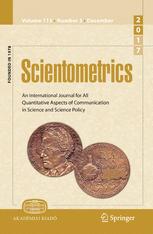Authors: David Walters and Christopher Daley (Brunel University, London)
Notes: An interesting article looking at integrating data sources to assess OA status and location of OA copies for single UK university. Focusses on data derived from CORE and from Unpaywall and its combination with other information from university systems.
Abstract: The UK open access (OA) policy landscape simultaneously preferences Gold publishing models (Finch Report, RCUK, COAF) and Green OA through repository usage (HEFCE), creating the possibility of confusion and duplication of effort for academics and support staff. Alongside these policy developments, there has been an increase in open science services that aim to provide global data on OA. These services often exist separately to locally managed institutional systems for recording OA engagement and policy compliance. The aim of this study is to enhance Brunel University London’s local publication data using software which retrieves and processes information from the global open science services of Sherpa REF, CORE, and Unpaywall. The study draws on two classification schemes; a ‘best location’ hierarchy, which enables us to measure publishing trends and whether open access dissemination has taken place, and a relational ‘all locations’ dataset to examine whether individual publications appear across multiple OA dissemination models. Sherpa REF data is also used to indicate possible OA locations from serial policies. Our results find that there is an average of 4.767 permissible open access options available to the authors in our sample each time they publish and that Gold OA publications are replicated, on average, in 3 separate locations. A total of 40% of OA works in the sample are available in both Gold and Green locations. The study considers whether this tendency for duplication is a result of localised manual workflows which are necessarily focused on institutional compliance to meet the Research Excellence Framework 2021 requirements, and suggests that greater interoperability between OA systems and services would facilitate a more efficient transformation to open scholarship.


